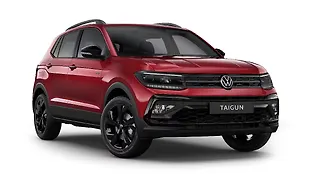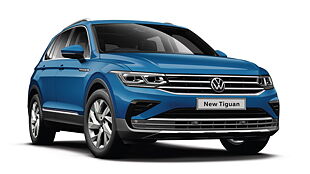Introduction

It was a Concorde moment of sorts when Volkswagen launched the Polo GT TSI earlier this year. Up until that moment, there had been no other car of this type in the Indian market. We had also mentioned in our written review that it was a hatchback from the future which would become a completely relevant car when the price difference between diesel and petrol reduced to a minimum.
While many marvelled at its seven-speed DSG and turbocharged TSI petrol engine, the obvious question on everyone’s mind was - This is diesel crazy India, when is VW going to give us an oil burner in the same pedigree? Sure enough, five months later Volkswagen plonked the 1.6-litre diesel engine from the Vento sedan into a Polo and voila! The GT TDI.

This car is a part of what seems like Volkswagen’s market strategy of creating special editions of all its cars. The GT (Grand Tourer) TDI is the third special car from the German automaker after the Polo GT TSI, Cross Polo and has since been followed by the Vento TSI sedan.
Exterior

The Volkswagen Polo GT TDI, unlike the name suggests, shows no major signs of being a potent little hot hatchback. Like its petrol twin, there is nothing major to differentiate it from the standard car (in the Highline variant) apart from the GT badges on the front and back. It even has the same creases on the side as well as the same ‘Estrada’ alloy wheels.

Much like the GT TSI, it too gets a rear spoiler in a bid to give the car some sporty credentials. Despite the fact that the Polo has been around in the Indian market for quite a while now, it does not look out of place or dated as compared to its rivals and that is a characteristic that should aid the Polo GT TDI in making its numbers.

Interior design and features
The Polo GT TDI has the same interior trim as the GT TSI which in turn mimics the standard Polo in the Highline variant (given a major upgrade in September 2012). The seats feel premium in spite of them just being dual tone fabric.

The leather-wrapped wheel and gear lever, the quality of the buttons and stalks and the aluminium pedals add to the premium feel of the car, but then again quality fit and finish seems to come easy to the Germans whatever be the car.

The feature list on the GT TDI is exactly the same as the Highline variant. This means climate control and a two-din music system with AUX, Bluetooth, USB, Memory card reader, iPod connectivity and four speakers. We tested out all the options on the music system and found most of them easy to connect. However, if you have a slightly older iPod connected to the system navigating through a playlist or song list can be a bit of a challenge.

The climate control is acceptable for a car in this price range and at higher fan speeds the system tends to get noisy and at times very distracting. All four windows work on a one-touch system and even when you have them up, the cabin is not very well insulated from a significant amount of road noise and characteristic diesel engine clatter.

What the insulation also fails to hide is the vibrations from the four-cylinder 1.6-litre diesel engine. It can be felt in the pedal, steering wheel and the gear lever and more so when the car is revved hard. This is a relatively old engine as compared to the ones powering its rivals and lacks the refinement that one would expect in a car of this pedigree.

In fact, when I pressed the horn for the first time, it sounded muted and quite ineffective but upon repeating the activity with windows down, my expression was matched to someone standing next to a honking lorry on a busy road.

Sporty little touches in the cabin include the GT scuff plates and a gear change indicator on the orange LCD display nestled between the speedo and the RPM gauge. It shows you when to shift only once you go into third gear.
Engine, ride and handling
The 1.6-litre four-cylinder diesel engine has been taken from the Vento sedan and produces 105bhp at 4,400rpm and a rather monstrous 250Nm of torque in the range of 1,500rpm to 2,500rpm. Power is transmitted to the front wheels via a five-speed manual gearbox.

The output of 105bhp is quite sufficient to propel the Polo without much effort. However, much like any other turbo diesel, there is a lag up to 1,700rpm after which the turbo starts to slowly kick in but thanks to the 250Nm of torque the engine has sufficient grunt to push the car forward even at low rpms.

The high torque figure for such a small car means that in heavy bumper to bumper traffic you can switch to second gear and inch the car along without much difficulty. Consequently on the highway, you can easily cruise at speeds of 100kmph at little under 2000rpm and still have enough power to overtake without prior planning. On the refinement front, the engine is a bit of an anachronism as it is quite loud and as we had said in the interior section, the vibrations from it are quite high.

Volkswagen has said that the GT TDI has an ARAI efficiency of 19.7kmpl and I was able to achieve 14kmpl in the heavy evening traffic of South Mumbai. A light-footed run on the Eastern Freeway in the wee hours of the morning gave me a floating fuel efficiency of 25kmpl, so you can expect efficiency of around 16kmpl in more realistic conditions.
On the handling front, the Polo by itself is quite a good car and the GT TDI seems to carry on the name. The electric power steering is quite light and precise. You can push the car hard into the corners, and your actions will not unsettle the car. It handles pretty decently despite the heavy diesel engine and will understeer only if you push it too hard. Volkswagen has retained the ABS but removed the ESP that was present in the GT TSI, most probably, in a bid to keep costs down.
The relatively soft suspension setup means you can drive over most potholes and bad tarmac without jarring your spine too much. The brakes consequently are not too efficient and with such power on the tap perhaps griper tyres would have been nice.
Verdict

The price tag of Rs 8.08 lakh is slightly on the higher side, considering the fact that the only major change is the bigger engine. But then it is actually not Volkswagen’s fault – the 1.6-litre engine means it does not qualify as a small car as per the Indian tax regime and you have plenty of options that are bigger and yet fit the bill at the price point.
The top-end Maruti Suzuki Dzire and Honda Amaze with extra boot space are available for a lower price tag, but neither would match the GT TDI in performance and handling. And that is the reason why it has been launched as a sort of a limited edition model. This is not for those looking for the biggest car their money can buy, but for those looking at a quick, convenient hatchback with benefits of a diesel.

![Volkswagen Polo [2012-2014] Image Volkswagen Polo [2012-2014] Image](https://imgd.aeplcdn.com/272x153/cw/cars/discontinued/volkswagen/polo-2012-2014.jpg?q=80)
























